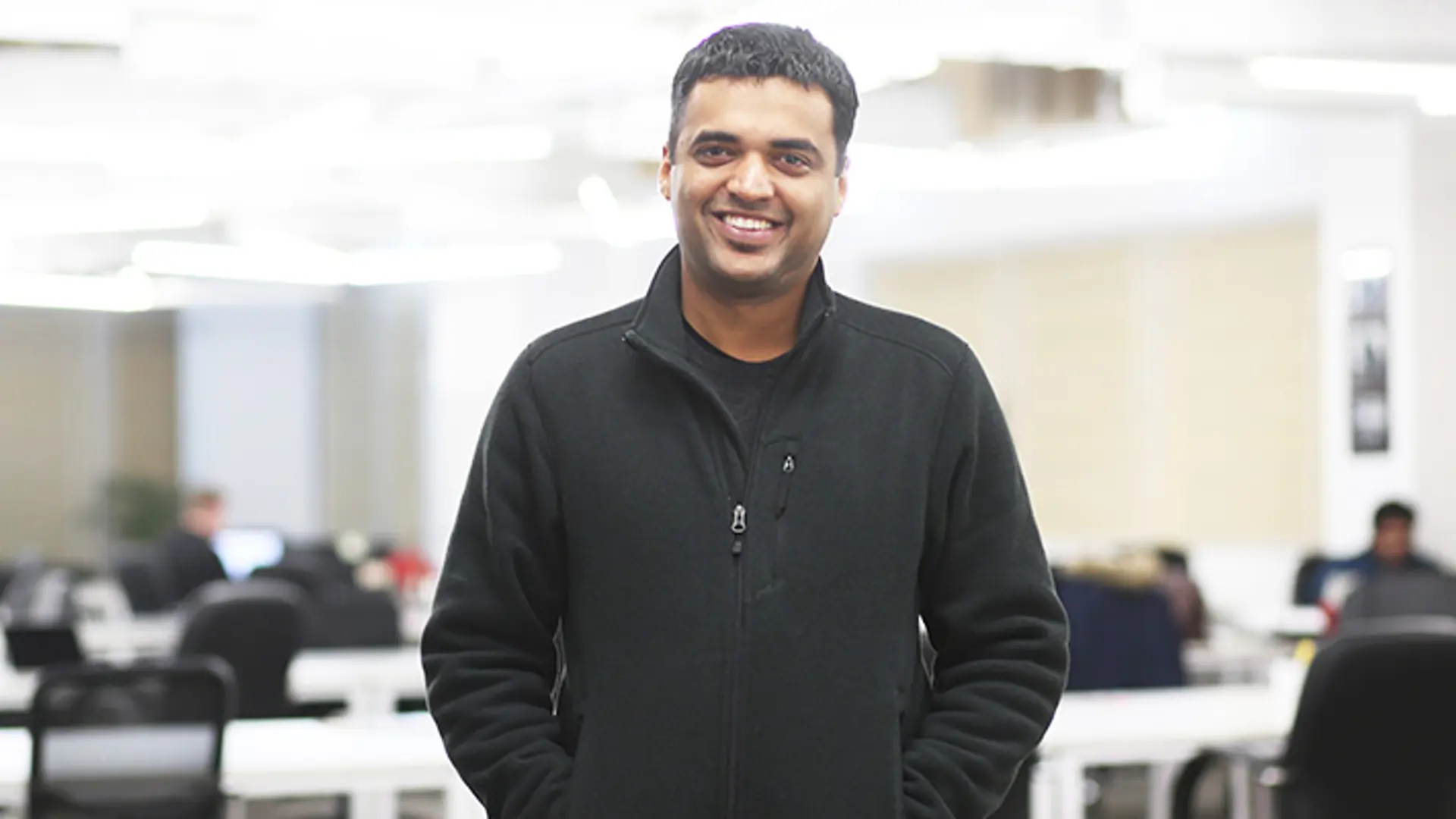The Innovation Formula: 14 tips for business creativity and growth
One of the hottest areas of business research these days is innovation. A growing volume of academic and business research focuses on the culture of startups and innovative corporations. An authoritative curation of insights into innovation is offered by the new book, The Innovation Formula: The 14 Keys for Creating a Culture where Innovation Thrives, by Dr Amantha Imber. (See also my reviews of the related books, The Idea-Driven Organisation, The Innovation Engine, and Invent, Reinvent, Thrive.)

Amantha is an innovation psychologist and founder of Australian innovation consultancy Inventium. She is the co-creator of the BRW Most Innovative Companies list, an annual ranking of Australia's top innovators. With a PhD in organisational psychology, Amantha has helped companies such as Google, Coca-Cola, Disney, LEGO, Red Bull, American Express, Virgin Australia, and Commonwealth Bank in their innovation initiatives.
The book draws on a wide range of insights from the author’s career through a range of companies, and on academic journals and research studies on innovation. Amantha begins with an ‘innovation culture audit’ based on a survey of 28 questions, which will help assess an organisation’s readiness and journey on the innovation path.
The tips and case studies are classified into four levels or units of analysis: individual, teams, leadership and organisation. I have summarised these 14 key factors of innovation in Table 1, along with relevant examples.
Table 1: Actions for innovation impact
1. Individual-level factors
A sense of challenge is necessary for individuals to feel creative and want to contribute, but the challenge should not be too overwhelming – it should be just enough to take employees out of the boredom or predictable performance level. The work challenge should be matched with the individual’s skillsets, and the necessary resources should be provided.
Managers should set the context for work, but without excessive control or micro-management. “People need to experience autonomy and gain confidence in their choices through experience before they start to show a significant increase in their creativity,” says Amantha. This can include work schedules, working from home, and even vacation policy (for example, NetFlix allows employees to take vacations whenever they want as long as they act in the company’s best interests).
Recognition drives employee engagement in two ways: extrinsic motivation (for example, pay raise) and intrinsic motivation (for example, internal satisfaction, enjoyment). Recognition can be private (formal and informal comments between a manager and an employee) or at the level of team or entire organisation. Efforts and persistence should be rewarded along with outcomes. Some companies give small monetary rewards for any idea, others have more systematic innovation recognition aligned with company roadmaps.
For example, FourSquare has engineer demo days every second Friday, where work in progress is showcased. Intuit offers the Founder Innovation Award ($1 million, presented by founder Scott Cook) and Scott Cook Innovation Awards for innovators who bring benefit to customers, employees, and shareholders. There is also an Innovation Wall of Fame.
Coca-Cola Amatil gives out the Innov8 Award, and also organises sessions called Innov8 Hours, where teams present new work in five- to ten-minute chunks.
2. Team-level factors
Debating activities should be encouraged to assess and select good ideas. Workforce diversity helps in terms of demographics (age, gender, and ethnicity) as well as jobs and roles (cross-functional and educational backgrounds). But too much diversity may actually lead to communication problems.
“Having teams that are open, trusting, and supportive of each other is a critical driver of an innovation culture,” advises Amantha. Informal communication, awareness of team roles and project progress, and a spirit which is cooperative rather than competitive help with team commitment. Performance evaluations should include collaboration as well as contribution to team efforts.
Organisations need to promote vertical collaboration (with managers and employees) along with lateral collaboration (between employees curious about others’ work), and with customers and partners as well. For example, Pfizer’s business unit initiatives bring in company experts from outside the unit so as to include fresh and unbiased perspectives.
Inventium lets employees work from home or from cafes – except on Mondays and Fridays, when they sit around large tables. Employees at gaming company Valve have desks on wheels, so they can move over and sit next to anyone they wish to collaborate with; this helps break down departmental silos.
3. Leader-level factors
Through task design and relationships, managers can inspire innovation behaviours among their employees. Managers should provide task clarity and resources to employees; they should also be empathetic, show concern for employee feelings, and be friendly. Managers and supervisors should maintain regular contact with employees, ask them for ideas, listen to their suggestions, offer feedback, help solve their problems, and increase their sense of confidence.
At the highest levels, senior leaders need to set direction, focus and resources for innovation. This includes money, time, talent, and personal involvement (not just delegation) by top leaders. A mix of full-time and part-time roles across the company will be needed. Leadership support is particularly necessary for high-risk exploratory projects.
Employees should be allowed time to experiment on new ideas of their own, for example, ’20 per cent time’ at Google and 3M, and ’10 per cent unstructured time’ at Intuit. Managers should also help employees in these initiatives, for example, by making the right connections. This use of time at Intuit can be for customer or process improvements, or professional skill development. Intuit has also created its own version of design thinking called Design for Delight, and promotes Customer-Driven Innovation (CDI).
LinkedIn organises Hack Days once a month on a Friday, and the winners can get incubation funding, resources, and mentoring to work on their proposals for another 90 days. “At Pfizer, there are over 500 innovation champions or catalysts who spend 10–15 per cent of their time to help facilitate and coach people through the innovation process,” Amantha observes. Interestingly, these champions are not necessarily the traditional ‘high performers’.
Rather than over-funding big expensive initiatives, it may help to ‘micro-fund’ or seed fund a broad range of smaller emerging initiatives (the Y-Combinator approach); further resources and funding can be allotted to winners. This approach is used by Deloitte’s Innovation Council, which meets once a month and awards $10,000 to proposal teams.
Adobe offers a Kickbox toolkit for those who want to prototype new ideas; it even includes chocolates, Starbucks vouchers, and a $1,000 pre-paid credit card. Nestle’s innovation toolkit is called Red Box, and includes $500 in support; winners get a Blue Box with even more support. Commonwealth Bank of Australia has a related initiative called CANapult, with $650 per idea and an assigned ‘Buddy’ from the company; next versions will involve customers and suppliers as well to co-create ideas.
As for goal clarity, leaders should set big goals for innovation as well as smaller ones, with a mix of strategic innovation and reactive innovation. ‘Blue-sky thinking’ is much-hyped, but is like “playing darts without a dartboard, you simply don’t know where to aim,” cautions Amantha.
Her company Inventium sets Innovation Missions, with a mix of incremental and breakthrough or disruptive opportunities. Effective goal-setting impacts the quality and efficiency of project outcomes, especially if progress measures are included. Mirvac has innovation KPIs for leaders, managers, and innovation champions. Other firms assess employees based on their ideas, impacts, and collaborative efforts to make these ideas happen.
4. Organisation-level factors
Risk-taking cultures can be promoted by acknowledging that failures do occur, but coupling that with a learning attitude to document and share lessons. Eagerness should be balanced with vigilance. However, many companies prioritise bureaucracy and efficiency over flexibility and exploration.
For example, Engineers Without Borders (EWB) publishes an annual Failure Report, and created a website to share lessons from development and relief projects around the world. Silicon Valley’s FailCon event shares mistakes and learnings of entrepreneurs and investors.
“There is no finish line. There is no right answer,” says Neil Christie, head of Wieden+Kennedy, an ad agency that has a slogan ‘Fail Harder’ to encourage employees to keep trying harder and overcome challenges. In performance reviews, employees are asked about their ‘bravest and best failure’ each year.
Tata Group and Pfizer have ‘Dare To Try’ awards for those who worked on initiatives that did not succeed; lessons and sometimes technology components can be extracted from them. Inventium has a saying that ‘Everything is in beta’, and encourages learning organisation behaviours of feedback, improvement, and comfort levels with failure as a part of the creative process.
“We think of experiments as learning vehicles,” adds Hugh Molotsi, VP of Intuit Labs Incubator. The company runs a monthly Incubation Week, with five to ten pitches for ideas that improve customers’ lives. The event aims to move from idea (Monday) to MVP (Friday) in a week.
Etsy conducts ‘blameless post-mortems’ a day or two after mistakes occur, to identify remediation items. This helps employees become more aware of lurking or latent conditions of failure; they become less fearful of getting into trouble, especially if they acted in good will. “We have a ground rule that the purpose of a post-mortem is to find out what happened and how to make it better, not to find a person to blame,” says Chad Dickerson, CEO of Etsy.
A sense of humour can also help in dealing with failure and its aftermath, according to Barry Gold, MD of Buzz Products. (See also my reviews of the related books Fail Better and Fail Fast or Win Big.)
Leaders can build a sense of cohesion through vision and mission setting, along with techniques like storytelling. The feeling of togetherness and creating customer impact helps reduce conflict, and create a growth mindset rather than one of scarcity.
At its national conferences, pharma company AbbVie focuses more on number of patients helped and the related patient stories than sales volumes. Buzz Products has a ‘buddy programme’ where Buddy Groups are given a budget of $15 each per month for fun activities; the employees are drawn from different teams, and includes new employees.
Etsy even regards the whole world as its team by its open API. Inventium lives by its principle of ‘Share Generously’ by offering innovation workshops for its non-profit sector clients at whatever price they can afford to pay.
At the front end, companies should democratise innovation by allowing anyone to participate and offer suggestions on improving customer lives; at the back end or implementation process, there should be a stronger focus on roles and responsibilities to develop prototypes. Once challenges have been set and defined, ideas should be generated and shortlisted, and experimentation and scaling can then proceed. In addition to idea generators, companies should actively rope in idea testers.
Inventium has a Peeve Points process to identify customer pain points, which then become launchpads for innovation projects. Google has a programme called Bureaucracy Busters for Googlers to identify and remove internal roadblocks. Chad Dickerson started Hack Days when he was at Yahoo, and then launched Hack Weeks with participatory voting when he moved on to found Etsy.
Frameworks like Lean Startup help in this regard, via processes for testing Value Hypothesis and Growth Hypothesis. Other trends to watch are crowdsourcing.
Office space design can also spur creative connections and attitudes, for example, presence of plants, exposure to natural lighting and scenery, medium background noise, and mingling spaces for cross-pollination between employees across departments. Construction company Mirvac even issued an open call for volunteers to redesign the office space.
“Creating a culture won’t happen overnight,” cautions Amantha. However, the body of knowledge about what it takes to create an innovation organisation continues to grow, and offers actionable lessons to startups and corporates alike.
“Innovation is a learned skill,” Amantha sums up.







